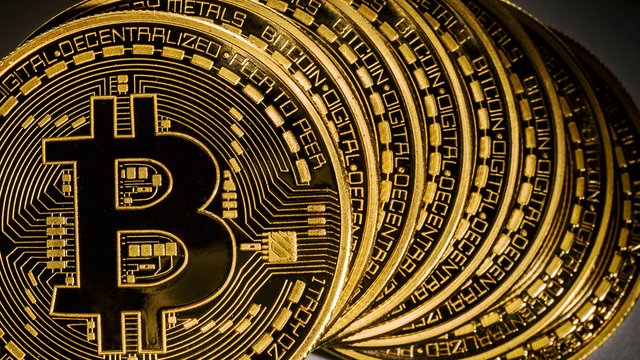Is Bitcoin the Future of Money?? | The Blockchain Blog on Steemit 📈⚡
“The swarm is headed towards us.”
– Satoshi Nakamoto
Welcome back to the @blockchainblog on Steemit! 📈⚡

Cryptography, Digital Money and Bitcoin
Viable digital money was developed with the advent of cryptography. There are two fundamental challenges involved in using data to represent value that can be exchanged for goods and services, and those are:
- Can one trust the digital money is authentic and not counterfeit?
- Can I be sure that no one else can claim that this money belongs to them and not me? (Aka. The “double-spend” problem)

Paper Money
Physical paper money addresses the double spend issue easily because a piece of paper cannot be at two places at the same time (unless it is placed in a quantum state of superposition, which is highly unlikely with current technology); however, issuers of paper money are in a constant battle with counterfeiting issues and must resort to increasingly sophisticated papers and printing technologies.

Digital Money
Of course, the major portion of fiat currencies is stored and transacted digitally. In those cases, the counterfeiting and double spend issues are resolved by a central authority that has a global view of the currency in circulation. Digital money, which cannot make use of esoteric inks and holographic strips for security, can take advantage of cryptography to provide legitimacy and trust in claiming value. Cryptographic signatures enable any user to sign a transaction of digital asset proving the ownership of that asset. Digital signatures not only make digital assets authentic but also address the double spend problem.

Cryptography & Digital Currencies
As cryptography gain popularity in the 1980’s, many researchers began using cryptography to build digital currencies. These early digital currency developments issued digital money that was typically backed by either the local national currency or a precious metal such as gold or silver.

The Problem: Centralization
Although these early digital currencies worked, they were centralized and thus vulnerable to manipulation and attacks by governments and hackers. These early digital currencies were based on a central clearinghouse to settle all transactions as a traditional banking system. In most cases, digital currencies were targeted by worried governments and eventually litigated out of existence. The digital currency’s parent company typically liquidated their assets abruptly causing these early digital currencies to crash quite abruptly.

The Solution: Decentralization
In order to be resistant to interventions from governments, criminals or any antagonists, a digital currency must be decentralized to avoid a single point of attack. Bitcoin is the first of such systems: completely decentralized by design and free of any kind of central authority that can be hacked. 👌

Bitcoin
Bitcoin represents the culmination of decades of research in cryptography and distributed systems. Bitcoin is the result of a unique and powerful combination of four key innovations:
- A decentralized peer-to-peer network (the bitcoin proposal)
- A public transaction ledger (the blockchain)
- A decentralized mathematical and deterministic currency issuance system (distributed mining)
- A decentralized transaction verification system (transaction script)
Stellar post! Always good to know history in order to create the future.